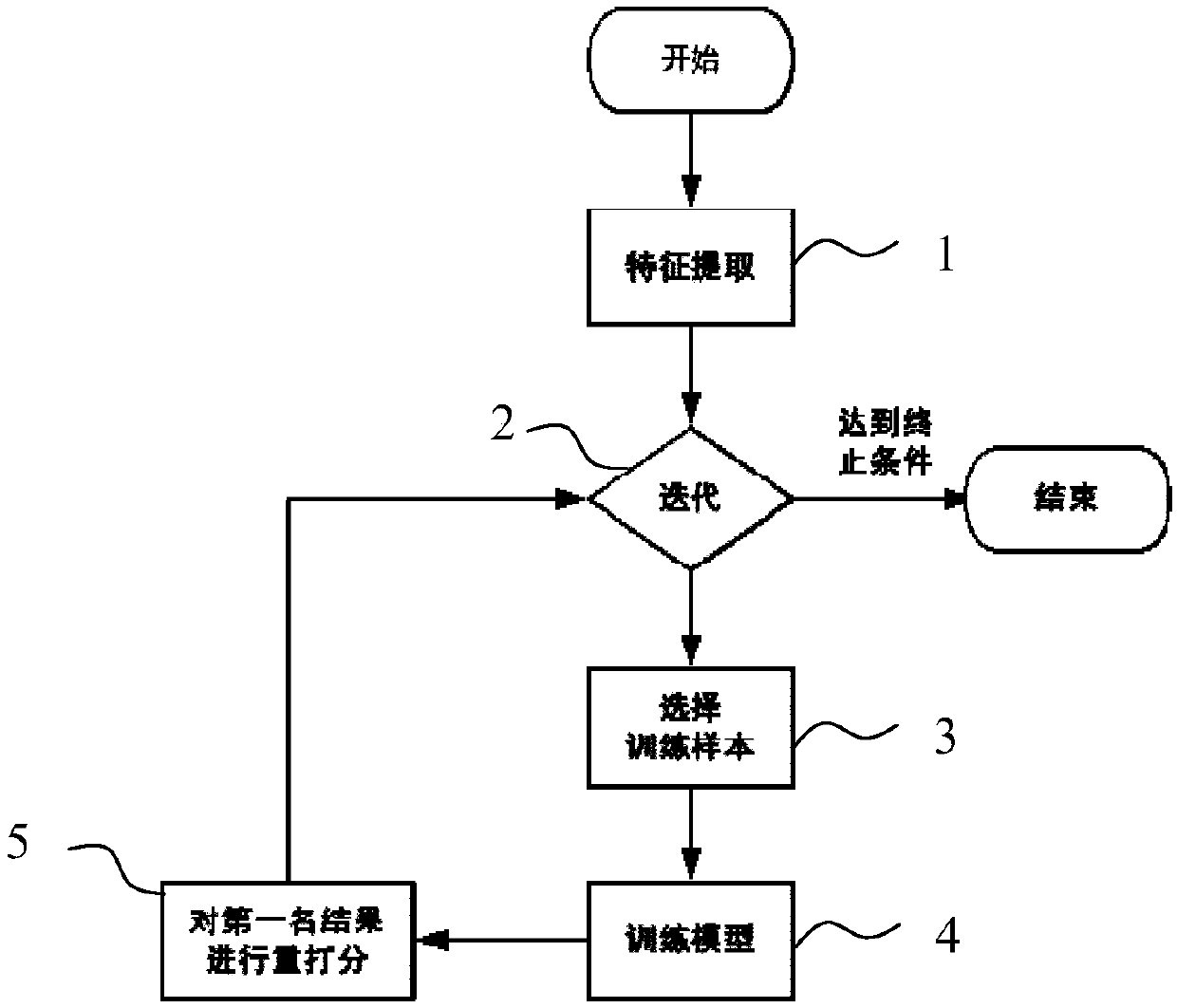A semi-supervised learning-based multispectral sorting method for cross-linked mass spectrometry
A semi-supervised learning and sorting method technology, applied in informatics, bioinformatics, and used to analyze two-dimensional or three-dimensional molecular structures, etc., can solve problems such as instability and large sensitivity fluctuations, achieve stable performance and improve sensitivity , the effect of high sensitivity
- Summary
- Abstract
- Description
- Claims
- Application Information
AI Technical Summary
Problems solved by technology
Method used
Image
Examples
Embodiment Construction
[0038] figure 1 Shows a flow chart of a semi-supervised learning-based multispectral sorting method provided according to an embodiment of the present invention, refer to figure 1 , the method includes the following steps:
[0039] Step 1: Perform single-spectrum matching and sorting on each spectrum to obtain the best (usually the first score) cross-linked dipeptide single-spectrum matching result. In this embodiment, for all spectrograms obtained from the same batch of samples, the candidate peptide segment with the highest score matched by each spectrogram is obtained respectively. A spectrum is matched with a candidate cross-linked dipeptide to form a peptide spectrum match. The first place result refers to the peptide spectrum matching result with the first score. The peptide spectrum matching result includes information such as spectrum identification, peptide sequence, cross-linking site, and score. The above-mentioned matching scoring can use commonly used fine-scor...
PUM
 Login to View More
Login to View More Abstract
Description
Claims
Application Information
 Login to View More
Login to View More - R&D
- Intellectual Property
- Life Sciences
- Materials
- Tech Scout
- Unparalleled Data Quality
- Higher Quality Content
- 60% Fewer Hallucinations
Browse by: Latest US Patents, China's latest patents, Technical Efficacy Thesaurus, Application Domain, Technology Topic, Popular Technical Reports.
© 2025 PatSnap. All rights reserved.Legal|Privacy policy|Modern Slavery Act Transparency Statement|Sitemap|About US| Contact US: help@patsnap.com



